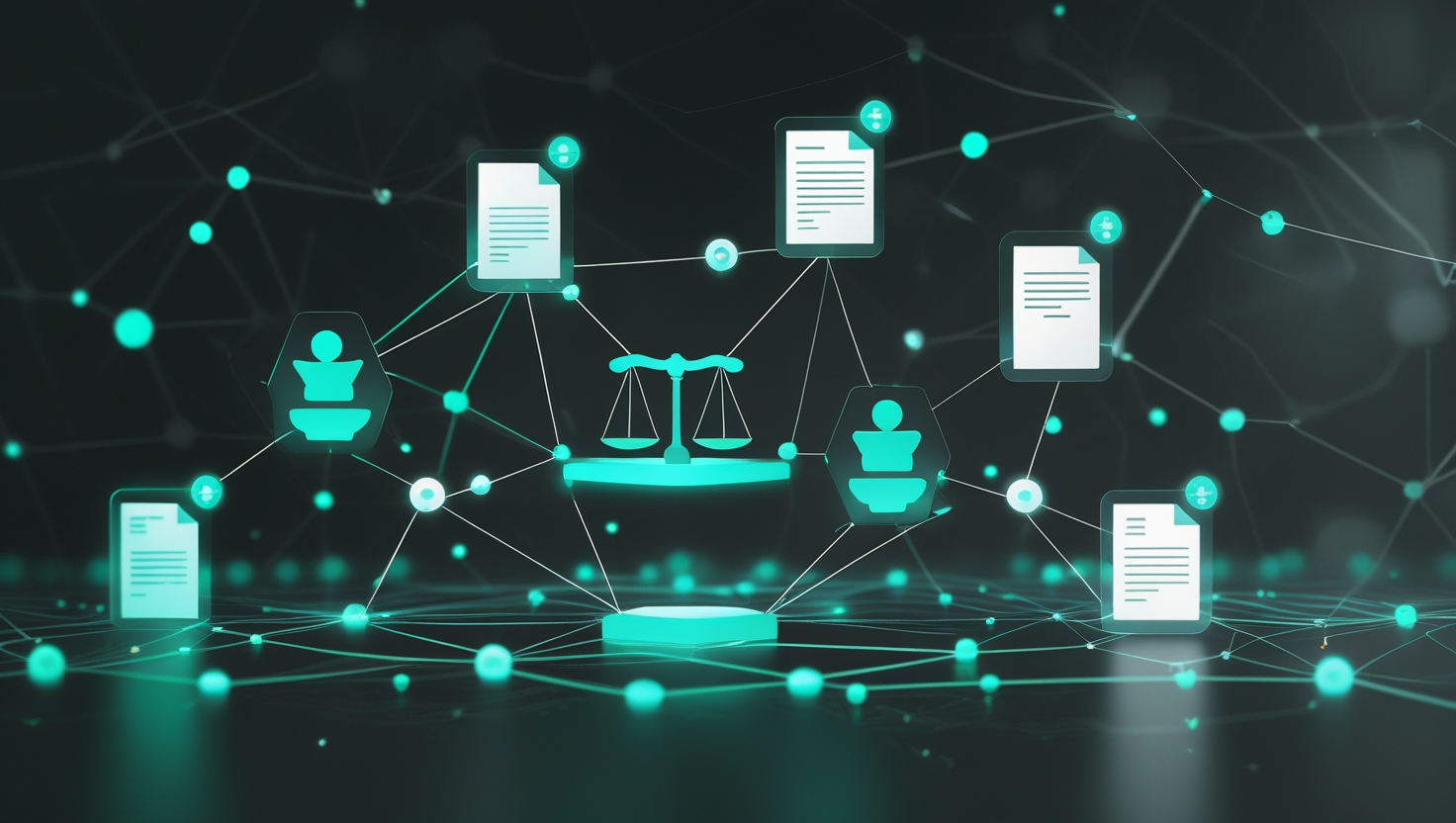Mastering Legal AI Tools: The Ultimate How-To Guide
Alright, let's talk about something that's shaking up the legal world faster than a surprise court date: Artificial Intelligence. Remember the good old days? Stacks of dusty books, late nights drowning in research, and maybe a trusty highlighter as your best friend. Well, times are changing, and honestly, it's pretty exciting. AI isn't just for sci-fi movies or automating factory floors anymore; it's stepping right into the courtroom, the law library, and even your inbox. If you're in the legal field, or just curious about how technology is transforming one of the oldest professions, you're probably wondering, "Okay, so what are these legal AI tools, and how do I even start using them?" You're in the right place. Think of this as your friendly, slightly witty guide to navigating the brave new world of AI for lawyers. We're going to cut through the jargon, look at what's really happening, and figure out how you can not just survive, but thrive with these powerful new assistants.
Let's be real, the legal landscape is getting more complex, client expectations are higher, and the pressure to be efficient is intense. This is where legal AI tools come into play. They're not here to replace you (deep breaths!), but to augment your skills, handle the grunt work, and free you up for the high-level strategic thinking you're actually paid for. From sifting through mountains of documents in seconds to drafting initial contracts, these tools are becoming indispensable. Ready to dive in and master them? Let's get started.
What Exactly Are Legal AI Tools and Why Should You Care?
So, what are we even talking about when we say "legal AI tools"? Simply put, these are software applications powered by artificial intelligence and machine learning algorithms designed specifically to assist with legal tasks. They leverage technologies like Natural Language Processing (NLP) to understand and process human language found in legal documents, and machine learning to identify patterns, make predictions, and automate repetitive actions.
Why should you care? Because time is money, especially in law. And let's face it, some legal tasks are incredibly time-consuming and, dare I say, a bit tedious. Legal AI tools promise to drastically reduce the time spent on things like:
- Legal research AI software: Finding relevant cases and statutes.
- Legal document automation: Drafting and reviewing documents.
- AI for e-discovery: Sifting through vast amounts of electronic data.
- AI compliance tools: Checking documents against regulations.
Beyond just saving time, these tools can also improve accuracy by reducing human error and provide insights that might be hard to spot manually, like AI-powered legal analytics. It's about working smarter, not just harder. Imagine finishing a research task in minutes that used to take hours. That's the power we're talking about.

How Legal AI Tools Work: The Basics
Okay, let's pull back the curtain a little. How do these things actually do their magic? (This answers FAQ 1: How do legal AI tools work?). At their core, many legal AI tools work by analyzing massive datasets of legal information – case law, statutes, regulations, contracts, you name it. They use algorithms to:
- Read and Understand: Using NLP, they can read legal text, identify key entities (like names, dates, clauses), and understand the relationships between them.
- Find Patterns: Machine learning helps them spot recurring patterns in data, which is crucial for tasks like predicting case outcomes or identifying relevant clauses in contracts.
- Generate Text: Generative AI in law can create new text based on patterns learned from existing data, enabling automated legal drafting.
- Automate Tasks: Based on the analysis, they can perform actions like extracting information, summarizing documents, or flagging risks.
Think of it like training a super-fast, super-thorough paralegal on millions of legal documents simultaneously. They learn the rules, the precedents, and the typical structures, allowing them to process new information and assist with tasks incredibly quickly. 80% of legal professionals report that AI tools have significantly reduced their research time.
Types of Legal AI Tools and Their Uses
The world of legal AI is expanding rapidly, with tools specializing in various areas of practice. Here's a look at some key categories, incorporating secondary keywords and product examples:
AI for Legal Research
This is perhaps one of the most popular applications. Tools in this category use AI to help lawyers find relevant cases, statutes, regulations, and secondary sources much faster than traditional methods. They can understand complex search queries and even suggest related concepts you might not have thought of.
- How they help: Accelerate research, uncover obscure precedents, summarize complex documents.
- Examples: Casetext, ROSS Intelligence, OneLaw.ai, Bloomberg Law AI. These platforms use NLP legal tools to analyze massive legal databases.
Using AI legal research software can feel like having a brilliant research assistant who never sleeps and has read every legal document ever published. It allows you to spend less time digging and more time analyzing and strategizing.
Legal Document Automation and Drafting
Drafting documents from scratch, or even from templates, can be time-consuming. AI tools are getting incredibly good at automating this process.
- How they help: Generate initial drafts of contracts, pleadings, wills, and other documents based on inputs; automate repetitive document assembly.
- Examples: AI.Law (specializes in drafting lawsuits), Latch (focuses on contract drafting and negotiation), LegalRobot (helps simplify legal jargon). These tools leverage automated legal drafting capabilities.
Can AI tools draft contracts or lawsuits? (FAQ 7) Yes, they absolutely can. Platforms like AI.Law can generate court-ready lawsuits surprisingly fast. However, and this is a big 'however', human review is always necessary to ensure accuracy and tailor the document to the specific situation and jurisdiction. More on accuracy in a bit!
AI for Contract Review and Analysis
Reviewing contracts, especially large volumes during due diligence or M&A, is a massive task. AI tools excel at reading contracts, identifying key clauses, flagging risks, and extracting important information.
- How they help: Speed up contract review, ensure consistency, identify missing or problematic clauses, perform AI in legal due diligence.
- Examples: Luminance, Humata AI, Amto, Latch (also helps with redlining). These are prime examples of AI for contract review tools.
These tools can read a contract in minutes, highlighting things you might miss after hours of staring at dense legal text. It's like having a second set of eyes, but with superhuman speed and recall.
AI for E-Discovery
In modern litigation, dealing with vast amounts of electronic data (emails, documents, etc.) is standard. AI is transforming the e-discovery process.
- How they help: Quickly review and categorize documents, identify relevant information, redact sensitive data, predict relevance.
- Examples: Luminance is a well-known tool in this space. This addresses FAQ 9: How do AI tools handle e-discovery?
AI for e-discovery tools can significantly reduce the time and cost associated with document review, which is often the most expensive part of litigation. They can cluster similar documents and learn what's relevant based on your input.
AI for Compliance and Risk Management
Keeping up with ever-changing regulations is a challenge. AI can help monitor compliance and identify potential risks.
- How they help: Monitor regulatory changes, check documents for compliance issues, identify potential legal risks in contracts or operations.
- Examples: LegalRobot assists with GDPR/DMCA compliance checks, Amto manages compliance monitoring for contracts. This falls under AI legal risk management.
Staying compliant is non-negotiable, and AI tools can provide an extra layer of assurance by constantly scanning for potential issues that might slip through manual checks.
Legal Chatbots and Virtual Assistants
Some AI tools interact with users through conversational interfaces, acting as virtual assistants or providing basic legal information.
- How they help: Answer simple legal questions, guide users through processes, assist with client intake.
- Examples: DoNotPay is a famous example, often referred to as a "robot lawyer" for handling simple consumer issues. Clio Duo offers secure AI assistance for various tasks, including client intake. These are examples of legal chatbot AI.
While they can't replace a human lawyer's advice, they can handle routine queries and streamline initial interactions, freeing up human staff.
Addressing Key Questions and Concerns
It's natural to have questions and even some apprehension about using AI in law. Let's tackle some common ones head-on, pulling from the provided FAQs.
Are AI-Generated Legal Documents Accurate?
This is a big one (FAQ 2). Most AI tools are incredibly powerful, but they are not infallible. They are trained on data, and if that data has biases or errors, the output can too. Also, legal nuances, specific factual situations, and jurisdictional differences are complex. Therefore, while AI can generate documents quickly, they almost always include disclaimers emphasizing that human review is essential. You, the legal professional, are responsible for ensuring the document is accurate, complete, and compliant with all relevant laws and facts before it's used. Think of the AI as a very smart first-year associate – they can draft something good, but you absolutely need to review and refine it.
Can AI Tools Handle Jurisdiction-Specific Legal Requirements?
Yes, many platforms are designed with jurisdiction-specific needs in mind (FAQ 3). Tools like AI.Law, for instance, tailor documents to state-specific statutes. However, the legal landscape varies not just by state or country, but sometimes even by specific court rules or local customs. While AI can incorporate standard jurisdictional variations, you'll still need to verify that the output meets all the specific requirements for your particular case or transaction in that exact location. Always double-check formatting, specific phrasing required by local courts, and any unique substantive laws.
What Are the Ethical Risks of Using AI in Legal Practice?
This is a critical area (FAQ 4). Using AI isn't just about efficiency; it comes with significant ethical considerations. Some key risks include:
- Biased Training Data: If the data used to train the AI reflects historical biases (e.g., in past case outcomes or language used), the AI's output might perpetuate or even amplify those biases. This is a major concern, especially in areas like criminal justice or employment law.
- Confidentiality Breaches: Inputting sensitive client data into insecure or public AI platforms (like a general-purpose chatbot) is a huge no-no. You must use secure, purpose-built legal AI tools that guarantee data privacy and confidentiality.
- Over-Reliance: Blindly trusting AI outputs without critical review is dangerous. Lawyers have a professional responsibility to exercise independent judgment.
- Lack of Transparency ("Black Box"): Sometimes, it can be hard to understand *why* an AI reached a particular conclusion or generated specific text. This lack of transparency can be problematic in a profession that requires clear reasoning and justification.
- Competence: Lawyers have a duty of competence. Using AI requires understanding its limitations and knowing when and how to use it appropriately.
Several states are already issuing ethical guidelines for AI use in law (FAQ 10). California and Florida, for example, emphasize the importance of transparency with clients about AI use and the need for human oversight. Staying informed about these evolving ethical standards is crucial.
Do Legal AI Tools Comply with Data Privacy Regulations?
Reputable legal AI tools designed for professional use prioritize data security and privacy (FAQ 5). Platforms like Clio Duo emphasize encryption and secure data handling. However, the responsibility also falls on the user. You must understand where your data is being stored and processed and avoid using tools that don't meet stringent security standards, especially for confidential client information. Never, ever paste sensitive case details into a public or general AI tool like ChatGPT unless you are absolutely certain of its security protocols and terms of service regarding data usage (and for most confidential data, it's best to avoid general platforms altogether).
How Much Do Legal AI Tools Cost?
Ah, the bottom line (FAQ 6). The cost of AI legal tools varies wildly. It ranges from freemium models (like DoNotPay, which targets consumers) to subscription services for individual lawyers or small firms, all the way up to custom enterprise plans for large law firms or corporate legal departments (like ROSS Intelligence or Luminance). Pricing models can be per-user, based on usage (e.g., number of documents reviewed, searches run), or a flat monthly/annual fee. When considering cost, think about the potential return on investment in terms of saved time and increased efficiency. A tool that costs a few hundred dollars a month might save you dozens of hours, which translates directly into billable time or reduced overhead. This is a key consideration, especially for AI for small law firms.
Choosing and Implementing the Right Legal AI Tools
With so many options popping up, how do you decide which tools are right for you or your firm? It's not a one-size-fits-all situation.
Assessing Your Needs
Start by identifying the biggest pain points in your current workflow. Are you spending too much time on research? Is contract review bogging you down? Is e-discovery a nightmare? The specific challenges you face will point you towards the types of tools that can help most. Consider your practice area, the volume of work, and the size of your firm.
Researching and Testing Tools
Don't just pick the first tool you see. Look for best legal AI tools 2025 reviews and comparisons. Many providers offer demos or free trials. Take advantage of these! Test the tools with your own data (securely, of course) to see how they perform on your specific tasks. Talk to colleagues who are using AI. Look at the product recommendations table below for some popular options based on recent trends.
Top Product Recommendations (Based on Search Results)
Here's a glance at some tools frequently mentioned, each with its own strengths:
| Product | Description |
|---|---|
| AI.Law | Drafts court-ready lawsuits in minutes, with jurisdiction-specific statutes. Sounds fast, right? Remember the human review part! |
| Clio Duo | A secure AI solution integrated into the popular Clio practice management platform, helping with document automation, client intake, and billing. Great if you're already a Clio user. |
| Casetext | Known for its GPT-4-powered legal research capabilities and assistance with deposition preparation. A strong contender for research-heavy practices. |
| ROSS Intelligence | Uses IBM Watson for case law analysis and precedent insights. Another powerful research tool. |
| Luminance | ML-driven contract review and due diligence automation, also used for e-discovery. Excellent for transactional practices or litigation with lots of documents. |
| DoNotPay | A chatbot aimed at consumers for handling simple issues like parking tickets. Less for traditional legal practice, more for access to justice. |
| Latch | Integrates GPT-4 for contract negotiation and redlining directly in Microsoft Word. Handy for contract drafting and review workflows. |
| LegalRobot | Helps simplify legal jargon and ensures GDPR/DMCA compliance. Useful for making documents more accessible or for compliance checks. |
| NexLaw | Presents itself as an end-to-end AI platform covering case analysis, drafting, and trial prep. Ambitious scope! |
| Humata AI | Focuses on extracting insights from legal documents and identifying risks. Good for document analysis. |
| Amto | Manages contract lifecycles and compliance monitoring. Useful for in-house counsel or firms managing many contracts. |
| Law.co | Offers semantic search and AI-driven document automation. Another option for research and drafting. |
| OneLaw.ai | Uses NLP for legal research and case summarization. Helps get to the core of cases quickly. |
| ChatGPT | A general-purpose AI tool. Can be used for drafting non-confidential text or answering general queries, but extreme caution is needed with legal tasks and data. |
| Bloomberg Law AI | Integrates AI features into the Bloomberg Law platform for research and regulatory analysis. A powerful option for subscribers to their service. |
Remember, this table is just a starting point. Each tool has different features, pricing, and areas of focus. Do your homework!
Implementation and Training
Once you've chosen a tool, plan its implementation. This isn't just installing software; it's about integrating it into your existing workflows. Training is crucial – make sure everyone who will use the tool understands its capabilities and, just as importantly, its limitations. Encourage a culture of critical review of AI outputs.
The Future of AI in Law
The legal tech AI space is evolving at lightning speed. What's next? We're seeing continued advancements in generative AI in law, making automated drafting more sophisticated. NLP legal tools are getting better at understanding complex legal language. AI-powered legal analytics will likely become more predictive and insightful. There's a growing focus on ethical AI in law, with developers working to mitigate bias and improve transparency. Expect tools to become more integrated, perhaps offering end-to-end solutions like NexLaw suggests. The trend is towards AI becoming a seamless AI legal assistant software, embedded in the platforms lawyers use every day.
It's an exciting, if slightly daunting, time. But by understanding the tools available, their strengths and weaknesses, and the ethical considerations, you can position yourself to leverage AI effectively and stay ahead in the legal profession.

Frequently Asked Questions
Let's revisit those burning questions you might have:
How do legal AI tools work?
Are AI-generated legal documents accurate?
Can AI tools handle jurisdiction-specific legal requirements?
What are the ethical risks of using AI in legal practice?
Do legal AI tools comply with data privacy regulations?
How much do legal AI tools cost?
Can AI tools draft contracts or lawsuits?
Are there AI tools for legal research?
How do AI tools handle e-discovery?
What states regulate AI use in legal practice?
Key Takeaways
- Legal AI tools are transforming the profession by automating tasks like research, drafting, review, and compliance.
- Key types include AI for legal research, legal document automation, AI contract analysis, AI for e-discovery, and AI compliance tools.
- Tools leverage technologies like NLP and machine learning to understand and process legal text efficiently.
- While powerful, AI outputs require mandatory human review for accuracy, relevance, and compliance with specific jurisdictional needs.
- Ethical considerations, including data privacy, bias, and over-reliance, are paramount when using legal AI.
- Costs vary widely, making it important to choose tools that fit your specific needs and budget.
- The future points towards more integrated, sophisticated, and ethically-focused AI legal assistant software.
Conclusion
So there you have it. Legal AI tools aren't just a passing fad; they're a fundamental shift in how legal work can be done. They offer incredible potential for boosting efficiency, improving accuracy, and freeing up lawyers to focus on the complex, strategic, and human aspects of their job. While the technology is powerful, remember that it's a tool. Like any tool, its effectiveness depends on the skill and judgment of the person using it. Navigating the ethical landscape and ensuring data security are non-negotiable responsibilities.
Embracing legal AI tools isn't about replacing the expertise and wisdom of experienced legal professionals; it's about augmenting it. It's about using technology to handle the repetitive, data-intensive tasks so you can dedicate more time to advising clients, strategizing cases, and practicing law at the highest level. The legal profession has always evolved, from quill pens to typewriters, from physical libraries to online databases. AI is just the next, albeit significant, step in that evolution.
Don't be intimidated. Start small, identify a specific workflow where AI could help, research the tools available, and give them a try. The legal world of 2025 and beyond will undoubtedly be shaped by artificial intelligence. By understanding and mastering these tools, you're not just keeping up; you're positioning yourself at the forefront of the profession.
Ready to Explore Legal AI?
The best way to understand the power of legal AI tools is to see them in action. Many of the tools mentioned offer free trials or demos. Identify the area where you need the most help – whether it's legal research, document drafting, or contract review – and take the plunge. Explore the options, test their capabilities, and see how they can transform your daily practice. The future of law is here, and it's powered by AI. Are you ready to master it?



